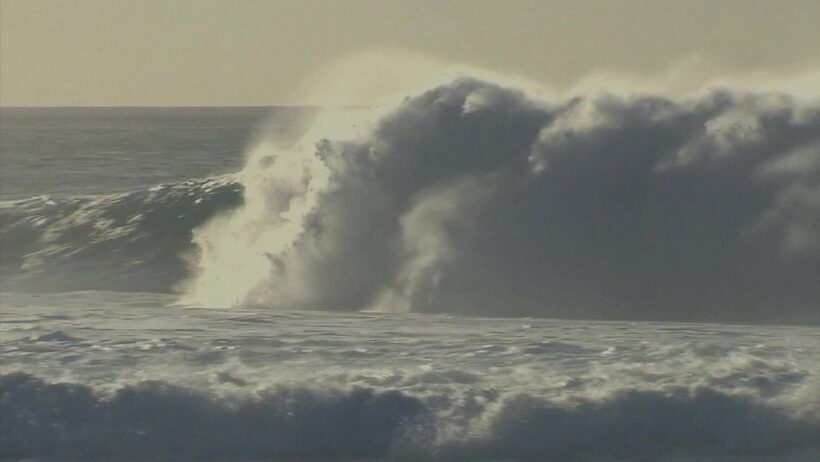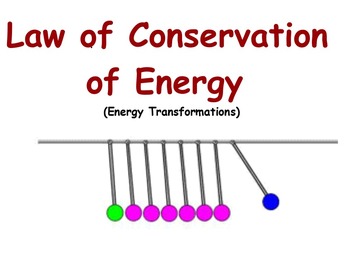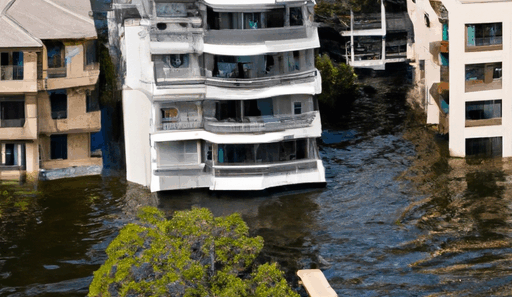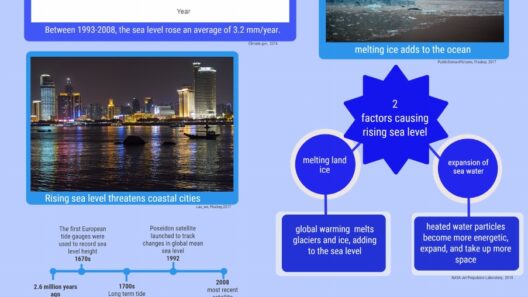Over the past few decades, the phenomenon of rising sea levels has garnered significant attention from scientists, policymakers, and concerned citizens alike. As coastal communities grapple with the ramifications of this environmental crisis, the pressing question remains: Is the sea level actually rising? The evidence suggests a resounding yes, with multi-faceted implications that warrant a thorough investigation.
Before delving into the intricate details surrounding this environmental issue, it is essential to understand what constitutes sea level rise. Sea level rise refers to the sustained increase in ocean levels due to various factors, primarily climate change. This rise can be attributed to two main components: the thermal expansion of seawater as it warms and the addition of water from melting ice sheets and glaciers. Understanding these components is crucial in comprehending the broader ramifications for ecosystems, human societies, and global economies.
The overwhelming scientific evidence points to a discernible rise in sea levels across the globe. According to satellite altimetry data collected over the past few decades, global sea levels have risen by approximately 3.3 millimeters per year since the early 1990s. This may seem modest at first glance, but over time, these incremental increases accumulate to form a substantial threat to coastal areas. As these seas encroach upon land, the plight of low-lying nations becomes increasingly dire.
The correlation between climate change and rising sea levels is becoming more apparent. One of the primary drivers of this alarming trend is the melting of the polar ice sheets. Satellite measurements reveal that both the Greenland and Antarctic ice sheets are experiencing significant loss of mass. Greenland is losing ice at an alarming rate of over 250 billion tons per year, while Antarctica’s contribution to sea level rise has increased nearly threefold in the past few decades. As these colossal ice masses continue to diminish, they contribute ever-increasing volumes of freshwater into the oceans.
It is equally important to consider the role of thermal expansion in rising sea levels. The oceans absorb approximately 90% of the excess heat generated by greenhouse gas emissions. As ocean temperatures rise, water molecules expand, leading to an increase in sea levels. This correlation underscores the urgency of addressing climate change as a systemic threat that encompasses multiple environmental phenomena, including ocean levels, temperatures, and ecosystem health.
Observations from various regions globally further confirm these alarming trends. Coastal cities such as Miami, New Orleans, and Jakarta are already contending with flooding that was once considered rare. Extreme weather events, exacerbated by climate change, are resulting in more frequent and severe tidal surges, threatening infrastructure and displacing communities. In particular, cities situated near the coast are all too familiar with the erosive effects of rising tides, as they grapple with saltwater intrusion into freshwater aquifers.
The impact of rising sea levels extends beyond mere physical changes to coastlines. Biodiversity in coastal regions is increasingly at risk as habitats are inundated, leading to the displacement of flora and fauna. Wetlands, crucial carbon sinks, are being submerged, while mangroves—natural barriers against storm surges—are threatened. The loss of these ecosystems not only disrupts local biodiversity but can also exacerbate the effects of climate change, creating a vicious cycle that spans generations.
How do we mitigate the impacts of rising sea levels? This question forms the crux of global sustainability efforts. Adaptation strategies, such as constructing sea walls and investing in green infrastructure, are among the various approaches being considered or implemented by governments worldwide. Some coastal cities have begun to invest in nature-based solutions that involve restoring wetlands and mangroves, which can provide both flood protection and habitat for wildlife.
However, adaptation is not a one-size-fits-all solution, and it comes with its own set of challenges and trade-offs. There are economic concerns surrounding the feasibility of large-scale infrastructure projects, particularly in developing nations that may lack the resources to combat rising sea levels. The complexity of the situation necessitates a multi-faceted approach that emphasizes not only mitigation but also societal equity and resilience.
The scientific consensus on rising sea levels is unequivocal, yet public awareness and proactive measures remain critical next steps in addressing this impending crisis. Education plays a vital role in informing communities about the risks of sea level rise and the need for urgent action. As people become increasingly aware of the threats posed by rising oceans, it will create a more informed populace capable of advocating for sustainable policies and practices.
The evidence supporting the rise of sea levels is overwhelming and irrefutable. Factors such as thermal expansion and the melting of ice sheets are fuelling this alarming trend, with global consequences that will affect millions. Coastal communities are facing unprecedented challenges, and biodiversity in these areas is under grave threat. It is imperative to take informed action, not only to mitigate these impacts but also to ensure the protection of our ecosystems and communities for future generations. The confluence of scientific evidence, environmental policy, and public engagement is foundational in the fight against rising sea levels and climate change as a whole.







